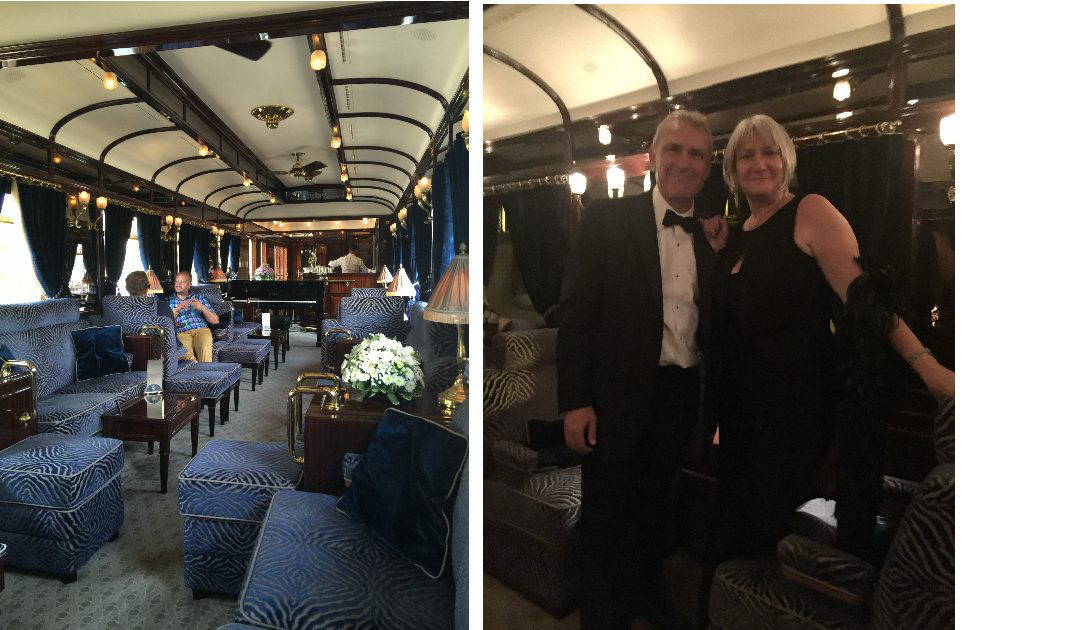Wikipedia tells me that on the 5th of June, 1883, the first scheduled Orient Express departed from Paris to Vienna. The first item ticked off our bucket list when Claire and I retired was to take that fabulous train from Paris to Istanbul, and Interrail our way home. Claire read Agatha Christie’s Murder on the Orient Express en route. In researching Agatha Christie I discovered that in the novel 4.50 from Paddington, David West is the second son of Miss Marple’s nephew Raymond West. He works at British Railways. At the beginning of the novel, Miss Marple writes to David to ask which trains might pass the 4:50 from Paddington. Anyway, back to the subject.
When one thinks of luxury travel, few images are as evocative as that of the Orient Express. Synonymous with opulence, romance, and a bygone era of elegance, the Orient Express has maintained its allure over the decades. More than just a train journey, it was a symbol of adventure and mystery, a moving palace transporting its passengers through stunning landscapes and cosmopolitan cities across Europe.
The Orient Express began operating from Paris to Istanbul (then Constantinople) on the 4th of October 1883. This legendary train was the brainchild of Belgian entrepreneur Georges Nagelmackers, who envisioned a trans-European express connecting the vibrant cultures of the West with the exotic allure of the East. It was a bold vision at the time, and the train’s operation marked a significant leap in the luxury travel market, catering to elite clientele who demanded nothing less than the best.
The original route of the Orient Express was a 1,980-mile journey that whisked its passengers through some of Europe’s most captivating locales, including Strasbourg, Munich, Vienna, Budapest, and Bucharest. Each city offered a glimpse into the diverse cultures and rich histories of the continent.
From the very start, the Orient Express was celebrated for its sumptuous comforts and exquisite design. It was a pioneer in providing unprecedented levels of luxury on rails. Its carriages were adorned with plush furnishings, polished wood panels, and exquisite glass lamps. The train was a rolling bastion of Art Deco elegance, with interiors designed to pamper and indulge.
Onboard, passengers dined on gourmet meals prepared by top chefs, including dishes like foie gras, lobster, and Champagne. The service was impeccable, with liveried waitstaff attending to every need. The Pullman sleeping cars provided an intimate and private sanctuary for rest, complete with fine linens and en suite facilities. This level of opulence ensured that the Orient Express became a symbol of sophistication and wealth, attracting royalty, dignitaries, and celebrities from around the world.
Throughout its illustrious history, the Orient Express attracted a host of famous passengers who added to its mystique. Among them was the acclaimed author Agatha Christie, whose experience on the train inspired her to pen “Murder on the Orient Express,” a gripping mystery that immortalised the train’s reputation for drama. Other renowned figures included legendary spy Mata Hari, who famously traversed the train’s corridors using her charm and cunning.
The train’s reputation for intrigue was not unfounded. During the interwar period, it became a conduit for spies, political emissaries, and clandestine affairs. The corridors of the Orient Express echoed with the whispers of secret agents and the clinking of crystal glasses, making it a microcosm of the geopolitical tensions of the era.
As aviation grew in popularity in the mid-20th century, the allure of the Orient Express began to wane. Air travel was faster and soon became the preferred mode for long-distance journeys. The original service was discontinued in 1977, marking the end of an era. However, the legend of the Orient Express was far from over. In recent decades, the train has experienced a renaissance. The Venice Simplon-Orient-Express, a private venture, now offers luxury train journeys that capture the spirit of the original. These trips are not merely about reaching a destination; they are an experience in themselves, recreating the glamour of the golden age of train travel. Today, stepping onto the Venice Simplon-Orient-Express is like stepping back in time. When you gaze out of the window at the crowds watching the train pass, you realise you are travelling in a film star.

